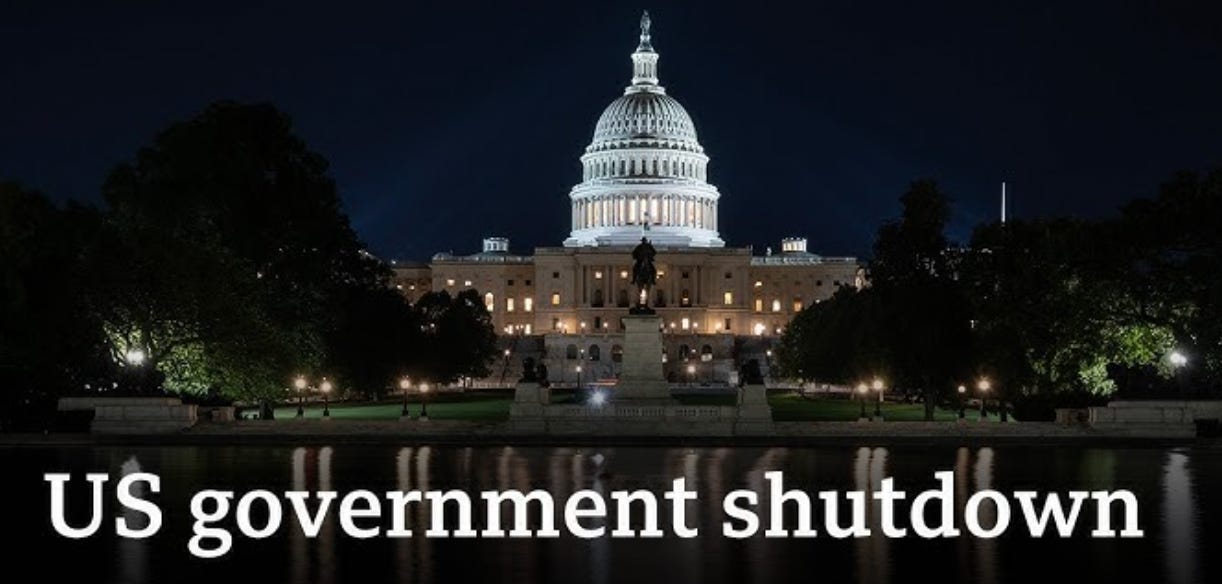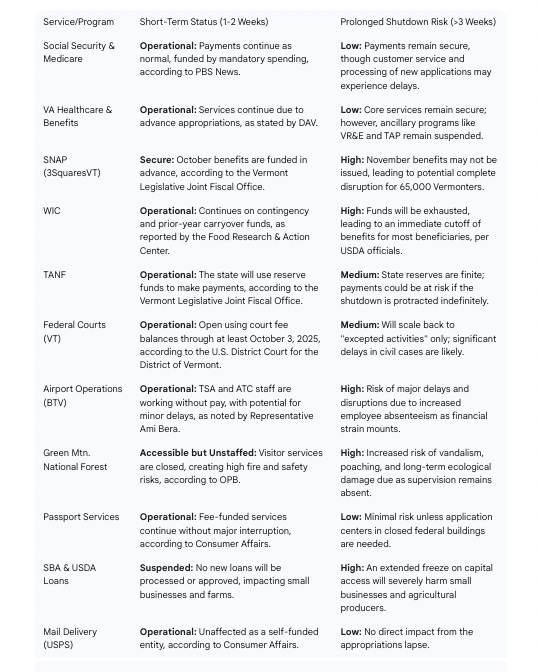Nearly 5,000 Vermont Federal Employees Begin Working Without Pay—Essential Programs Face Cuts Next
As of October 1, 2025, the federal government is shut down. For Vermont, this presents a two-stage problem: a manageable short-term disruption that could quickly become a severe long-term crisis.
While the state of Vermont is fiscally prepared for a brief shutdown of one to two weeks, a prolonged impasse threatens our economy, social safety net, and the well-being of thousands of Vermonters.
The Immediate Impact: An Unpaid Workforce and a Tourism Hit
The first shockwave hits Vermont’s 4,845 federal employees. Unlike in other states, mass furloughs are not the main initial problem. Because our largest federal employers are the Department of Veterans Affairs (VA) and Homeland Security (DHS), the majority of these workers are deemed “essential” and must report to work without pay.
This shutdown is dangerously different due to an unprecedented threat: the potential for permanent layoffs through Reduction in Force (RIF) notices. This transforms the shutdown from a temporary hardship into a potential long-term crisis for federal families, causing them to cut spending and harming local economies.
Other immediate effects include:
State Finances: Vermont is using its state reserve funds to temporarily cover gaps in federally-funded programs like Temporary Assistance for Needy Families (TANF). This is a short-term fix that puts state taxpayers at risk if the federal government doesn’t provide reimbursement.
Green Mountain National Forest: A direct hit to Vermont’s fall tourism economy. All federally-run visitor services, restrooms, and campgrounds are closed. The forest is unstaffed and unmanaged during the peak foliage season, creating safety risks and degrading the visitor experience.
Essential Services: Social Security, Medicare, VA healthcare, and mail delivery will continue uninterrupted. Airport security and air traffic control at BTV will also continue, but the TSA agents and controllers are not being paid.
The Escalating Crisis: When the Buffers Run Dry
Vermont enters this shutdown from a position of relative fiscal strength, with robust state reserve funds, as noted by the Vermont Legislative Joint Fiscal Office. These stabilization funds are available to meet short-term cash needs and can be used to temporarily “front” the costs for critical programs that would otherwise halt, such as TANF, according to the Joint Fiscal Office.
This strategy is predicated on the expectation that the federal government will eventually reimburse the state for these expenditures once the shutdown ends.
However, this reliance on historical precedent introduces a new element of fiscal risk for the state. While reimbursement has been the norm in past shutdowns, it is not legally guaranteed, as indicated by the Joint Fiscal Office.
If the shutdown lasts longer than two weeks, Vermont’s temporary shields will fail, triggering a cascade of problems.
Food Security at Risk: This is the most critical threat. Contingency funding for the Supplemental Nutrition Assistance Program (SNAP/3SquaresVT) and WIC (Women, Infants, and Children) will run out. This would cut off food assistance for 65,000 Vermonters on SNAP and thousands of new mothers and young children on WIC, overwhelming local food banks.
Housing and Business Freezes: Federal housing assistance payments (like Section 8) would eventually stop, threatening tenants with eviction. No new loans from the Small Business Administration (SBA) or USDA will be issued, halting a key source of capital for small businesses and farms.
Economic Ripple Effect: The longer the shutdown continues, the more money is drained from Vermont’s economy. The combination of lost federal paychecks, halted contractor payments, and reduced tourism revenue will lead to reduced sales for local businesses and potential private-sector layoffs.
What This Means for Vermonters
Understanding the shutdown’s mechanics is key to navigating its impact. The core issue is that while Vermont can handle a brief disruption, its resources are no match for a prolonged federal failure. For Vermonters, the path forward involves a few key actions:
Stay Informed: Rely on official state government sources for updates on programs like 3SquaresVT and TANF to avoid misinformation.
Support Local Non-Profits: Food banks and community action agencies will be on the front lines. They will need community support to meet the surge in demand if the shutdown continues.
Advocate: Let Vermont’s congressional delegation know how the shutdown is affecting you, your family, or your business. Urge them to work toward a resolution and ensure the state is fully reimbursed for its emergency spending.




